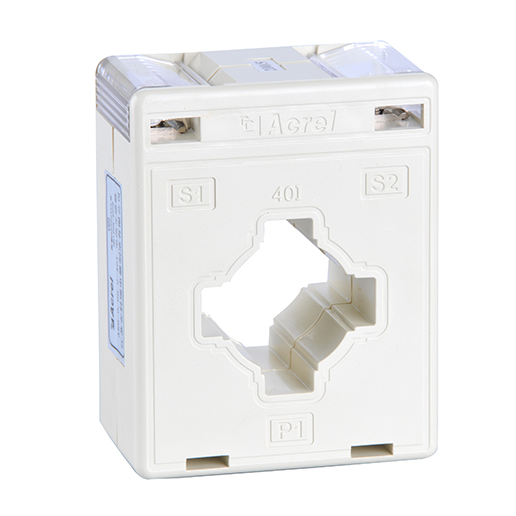If there are several thick cables at a worksite and we only know that a large current flows through them, but we want to know the exact value of the current, the first thing that comes to mind is to disconnect the cable and connect an ammeter in series. However, we know that the thicker the wire, the higher the current it carries, and it becomes more difficult and dangerous to handle thicker wires. Additionally, directly connecting requires a large-specification ammeter, which is difficult to find. In such situations, we need to learn how to use current transformers.
What are current transformers? Current transformers are actually current transformation devices (CT). Their main function is to induce a small current for measurement purposes from large currents passing through cables, according to a certain ratio. Electrical equipment and transmission lines often carry high currents, ranging from several hundred to several thousand amperes. However, the meters we use can only measure a few to a few tens of amperes at most, which does not match the current of the electrical equipment. Current transformers transform large currents into small currents to achieve matching and ensure the safety of detection and meter reading personnel.
According to national specifications, the rated current of the secondary winding of a current transformer is uniformly set to 5A or 1A. When should we use 1A, when should we use 5A, or can we use either one? In fact, there are certain regulations for this. In general, the preferred value is 5A, but when the transmission distance is large, 1A should be chosen. This is because the power consumption of a 1A circuit is reduced, allowing for longer transmission distances.
What about the range of the primary side? Is bigger always better? Not necessarily. In general, the accuracy of a typical instrument is highest at 60% of the range. Therefore, multiplying the calculated current by 1.3 will give the full-scale value. For example, if the bus current (i.e., primary current) is 600A, then the primary current should be selected as 600 x 1.3 ≈ 800A. This ensures that when the primary current is at 600A, the pointer of the instrument is precisely at 60%, or two-thirds of the way. This guarantees safe and more accurate measurements.
Once we have selected the appropriate current transformer, we need to pass the cable through it. The primary current of the current transformer enters through terminal P1 and exits through terminal P2. The wire on the P1 side is connected to the power supply side, while the wire on the P2 side is connected to the load side. Some measuring equipment has requirements for the polarity or direction of the current, such as energy meters, so it is important to ensure the correct orientation. According to the specifications, if the power source is from the top, P1 should face upward and P2 should face downward. If the power source is from the bottom, then during installation, P1 should face downward and P2 should face upward. This way, the current transformer will induce current from the cable. The secondary current induced flows out from terminal S1, enters the positive terminal of the ammeter, and after exiting the negative terminal of the ammeter, flows into terminal S2 of the current transformer. In principle, terminal S2 should be grounded. Some current transformers are labeled as primary nominal, L1, L2, and secondary nominal, K1, K2. This is merely a difference in terminology, and the functions are the same.

The induced current is reduced by a certain multiple. This reduced current is then measured by a meter (ammeter), and the measured result is multiplied by a certain multiple to obtain the actual result. For example, if we need to measure the current of a cable, we first pass the cable through a 200/5 current transformer (200/5 is actually a ratio of 40) and then connect the current transformer to an ammeter. If the ammeter reads 4A, we can calculate that the actual current in the cable is 4 x 40 = 160A. If a 200/5 ammeter is connected, the reading will directly show 160A. In this case, the current transformer reduces the current by a factor of 40, and the ammeter enlarges the reading by a factor of 40, so there is no need for calculation.